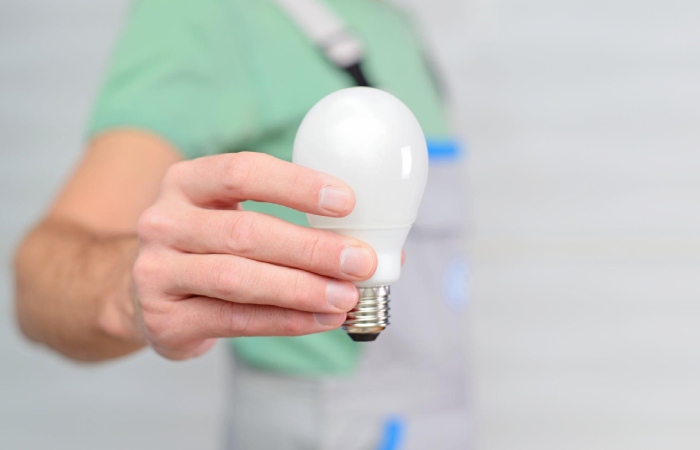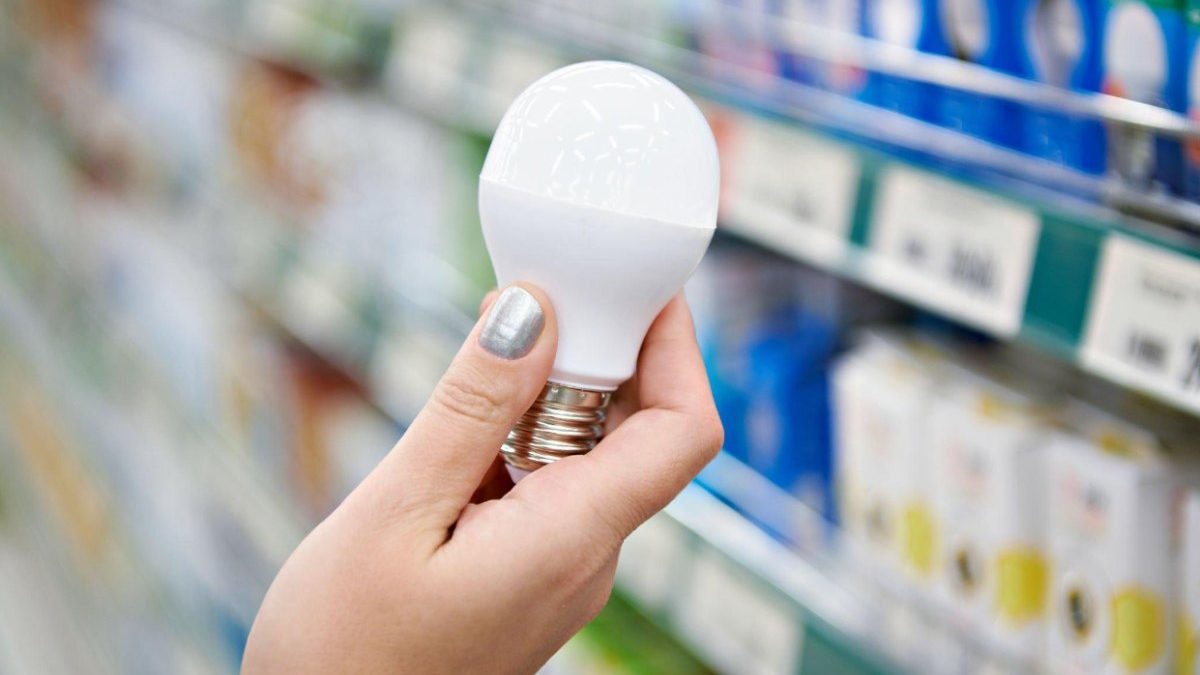Table of Contents
Introduction
LED High Bay Lights is the first step toward energy-saving housing. This standard is fully compatible with diode lamps for sale in a wide range. To not make a mistake in the selection, it is necessary to understand the design features of different LED devices.
We’ll tell you everything about how to choose LED lamps for the house and introduce them to their essential characteristics and differences. The article we suggested contains criteria you need to consider for a thoughtful purchase. Manufacturers of LED lamps that have gained a well-established reputation as responsible suppliers are listed.
Device and Diode Features
Externally, the led bulb is not much different from its counterparts – structurally, it also consists of a glass bulb and a cover. It just dramatically changed the internal content of the lights. The role of lighting is not performed by the tungsten coil but by the light-emitting diode.
- Low voltage is required until the led glows, so the device remains complemented by a driver- an electronic circuit that shifts the alternating current.
- Each item performs a specific function
- A working pair of radiator/aluminium panels responsible for cooling and removing heat from lamps and energy sources.
- In addition to installing the current, the driver protects the lamp from a short circuit and reduces the pulse of light flow.
- The system determines the number of led lamps, the strength of the light and the angle of lighting;
Led Lamp Device
- The standard design of the diode lamp and the light led system and base include a driver, a cooler, and an aluminium printed circuit board.
- The growing interest in binary is due to several significant advantages for incandescent lamps:
Profitability – electricity consumption remains reduced by 8-10 times;
Durability – service life remains increased by 20-40 times;
Voltage -Maintain brightness during low voltage;
Light heating of the lamp – there is no risk of burns on the led lamp.
You can install a diode brighter than an old counterpart with a glowing coil in a bit of power lamp.
Check The Lighting Capacity
ED lamps have a much higher power compared to other lights. On average, 1 watts of LED equals 10 watts of the incandescent model and 2.5 watts of the fluorescent type.
Be aware of this lighting capacity when buying an LED lamp, as mistakenly purchasing an option with higher power can excessively brighten a room and annoy its residents.
Currently, the most popular LED lamps are those with 10 watts of power, as they provide great luminosity for living rooms and bedrooms, for example. The 5-watt bulbs, in turn, are great for lamps and lampshades, as they give a lower luminosity capacity. For larger environments, there are still options of 14 or 15 watts.
Instructions For Selecting Led Lamps
Not everything is as simple as choosing a glowing lamp with a suitable led light definition. The lighting power is far from the only parameter to consider when purchasing.
Photo flow Properties of LED High Bay Lights

The traditional power indicator, measured in watts, is not suitable for choosing a led lamp. It’s not right to talk about led lighting brightness based on energy consumption. Lamps made with different techniques with the same light intelligence consume more electricity.
It is more correct to evaluate the energy equivalent and photosynthesis.
Power Equivalent
For consumer convenience, manufacturers on the packaging point to the power of an incandescent lamp that corresponds to the glow of an led product. For example, 12w led lighting provides the same amount of light as regular 100w lamps
If this information is not displayed, you can focus on the average indicator – lighting from led lamps is five times higher than an incandescent lamp with equal power consumption.
A more accurate idea of light quality gives the value of photo flow. The parameter distinguishes the lamp’s brightness and remains displayed in a lumen. The choice of lighting depends on the purpose of the room.
So, recommended criteria according to SNiP 23-05-95 per square meter:
- kitchen, bedroom, living room – 150 m
- children’s room, study -200 lm
- bathroom, hallway – 50 m.
- Knowing its room space, it is easy to calculate the required amount of photo flow. The value of the brightness of the diode lamp and the energy remain indicated on the packaging. However, it is best to take a device with a small margin of lighting, as manufacturers often overestimate this property.
Power and Light Flow Of LED
The graph clearly shows the symmetry of the light flow of different types of light bulbs consumed. brightness indicator is a global standard that allows you to compare and evaluate the quality of light lighting
Colour Spectrum – Glow Temperature
The lighting spectrum for led lamps varies from warm yellow to cold blue. The colour temperature remains determined by the colour temperature, which remains located in the range of 1800-6600°c.
So, the choice of glow tone depends on personal preferences, the surrounding lighting, and internal purpose. it should remain noted that a person recognizes all colours of light in different ways:
2700 k – warm white – promotes relaxation and comfort, applicable in a comfortable environment, such as a bedroom;
3000 yellow-white – slightly more incredible than its predecessor, recommended for living room and nursery;
3500 K – white daylight
4000-4800 k – neutral white – perfectly complements high-tech interiors and simplicity but somewhat limits the sense of comfort; lights remain installed in buildings and public offices.
Moreover, lighting units with a luminous temperature of more than 5,000 kelvins remain not recommended. Its purpose is to illuminate streets, industrial facilities and warehouses.
Glow Temperature of LED High Bay Lights
- Incandescent temperature lamps can convey the colours of surrounding objects in different ways. Unlike incandescent lamps, diode lamps have a limited spectrum, which may distort the actual image.
- However, the validity of colour perception depends on the colour embodiment factor. The index stands assigned as CRI or Ra.
- So, CRI is a relative value within 100, indicating how different colours remain seen when lighting the lamp. The standard is sunlight, CRI = 100. Incandescent lamps have a high colour embodiment indicator – 97-98.
Colour Embodiment Indicator
Therefore, white LED lamps, as a rule, contain a colour embodiment coefficient from 70-90. To light residential buildings, it is best to choose CRI products> 80
So, in detail about the colour temperature, LED bulbs to remain described in the following article, which we recommend you read.
Conclusion
The market offers a variety of LED hgh bay lights, often influenced by price. However, these models may not provide the same benefits as LED bulbs due to factors like energy consumption and durability. Despite these advantages, it is crucial to consider factors like lighting style and environment to ensure the best lighting solution.

